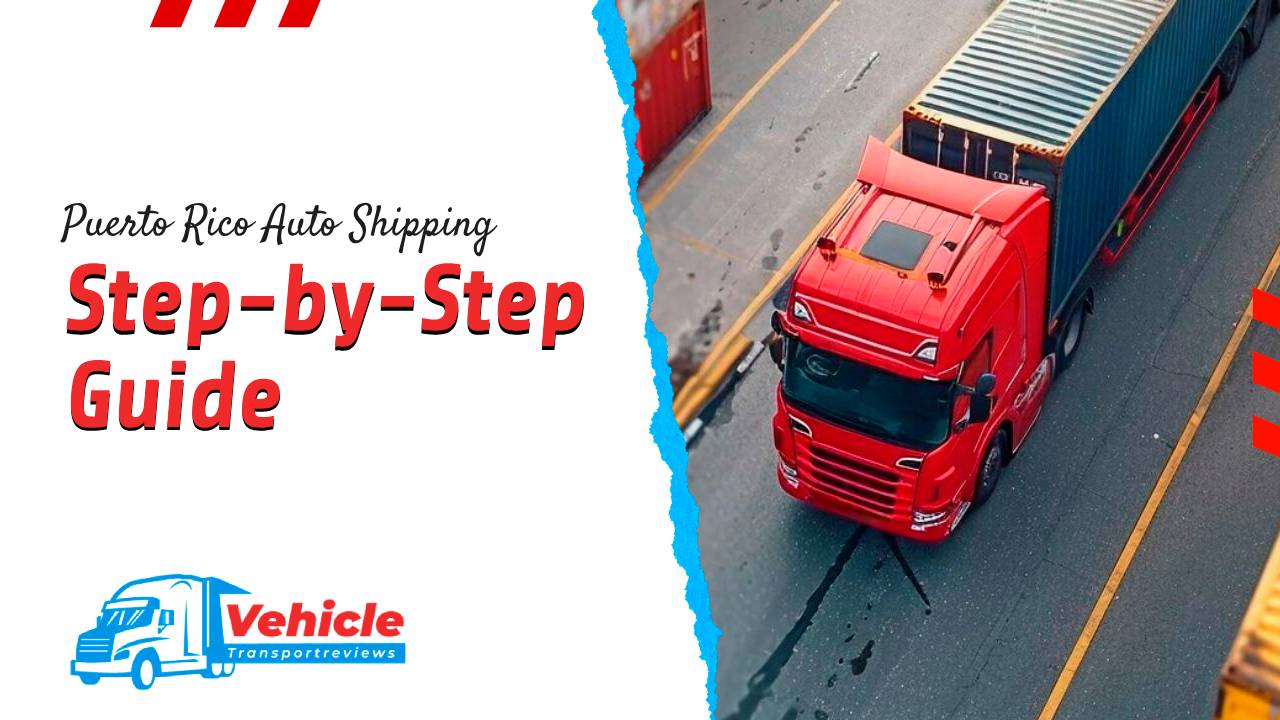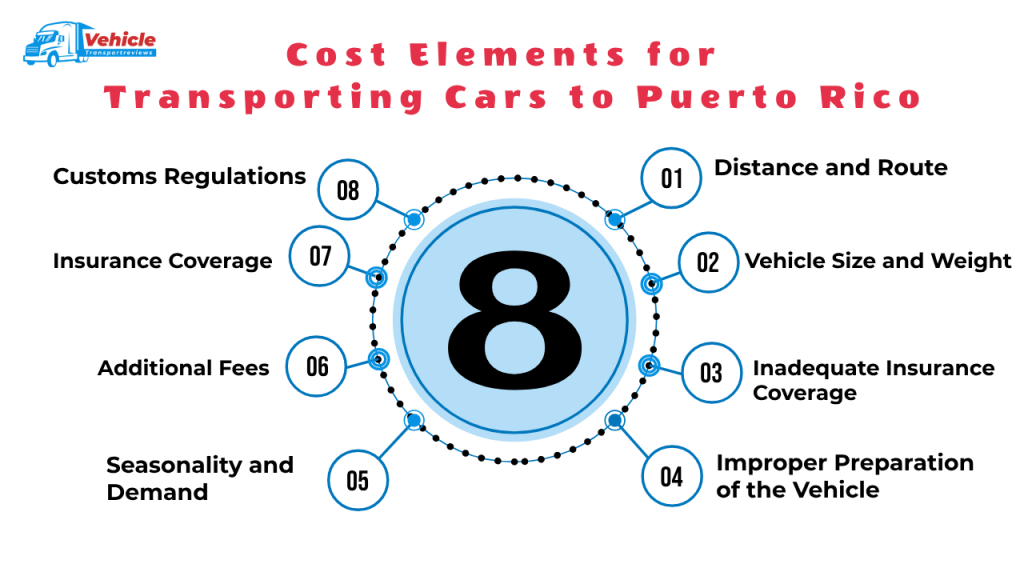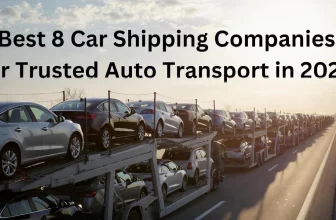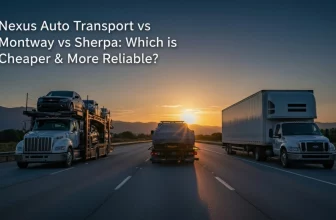Puerto Rico Auto Shipping: Step-by-Step Guide

Moving your car to Puerto Rico can be straightforward. “Puerto Rico Auto Shipping: Step-by-Step Guide” offers a detailed guide to simplify the process. It covers essential aspects such as choosing the most suitable shipping method for your vehicle, preparing your car for transport, and navigating the customs requirements. This guide is designed to ensure a smooth, efficient transport experience, helping you manage each step with ease and confidence.
Key Highlights
- Shipping Essentials: To ship a car to Puerto Rico, choose a reliable company, prepare your vehicle, and have the necessary paperwork ready.
- Cost Considerations: Expect costs to vary based on distance, vehicle size, and transport method, typically between $1,000 and $5,000.
- Final Checks: Coordinate pickup, navigate customs, and thoroughly inspect your vehicle for any damage upon delivery.

Transport Methods To Ship a Car
When shipping a car to Puerto Rico, the choice of transport method plays a crucial role in determining the cost, protection, and convenience of the process. Here’s an in-depth look at the most suitable shipping methods:
1. Open Transport
Open transport involves shipping your vehicle on an open trailer, often used for transporting multiple vehicles at once. This is the most common and cost-effective method for car shipping.
Best For: Standard, everyday vehicles where the primary concern is minimizing cost rather than protection.
- Cost-Effective: Lower cost compared to enclosed transport.
- Widely Available: Many auto transport companies offer this service.
- Efficient: Ideal for standard vehicles and generally faster due to the availability of transport options.
- Exposure to Elements: The vehicle is exposed to weather conditions, dust, and road debris.
- Potential for Minor Damage: Increased risk of minor damage due to exposure.
2. Enclosed Transport
Enclosed transport uses a covered trailer to protect your car from weather, road debris, and potential damage. This method is more secure and is typically used for high-value or classic cars.
Best For: Luxury, classic, or high-value vehicles that require additional protection during transit.
- Protection: Offers superior protection from environmental factors, reducing the risk of scratches, dings, and other damage.
- Security: Provides added security for high-value or luxury vehicles.
- Higher Cost: More expensive than open transport due to the added protection and specialized equipment.
- Availability: May be less available compared to open transport options.
3. Roll-on/Roll-off (RoRo)
Roll-on/Roll-off (RoRo) is a method where vehicles are driven onto a specialized cargo ship and secured for transport. This is a common method for international shipping.
Best For: International relocations or purchases where RoRo is an available option.
- Cost-Effective: Often more affordable for international shipments compared to enclosed shipping.
- Efficient Loading: Vehicles are driven directly onto the ship, which can streamline the process.
- Exposure to Elements: Vehicles are exposed to the elements unless transported on an enclosed RoRo vessel.
- Limited to International: Mostly used for international shipments; less common for domestic transport within the U.S. or Puerto Rico.
4. Door-to-Door Transport
Door-to-door transport means the vehicle is picked up from your location and delivered directly to the specified destination. This service is convenient and minimizes the effort required on your part.
Best For: Those who prefer a hassle-free experience and are willing to pay a premium for convenience.
- Convenience: Reduces the need for you to drop off or pick up the vehicle from terminals.
- Time-Saving: Streamlines the process by handling all logistics directly.
- Higher Cost: Generally more expensive due to the convenience and personalized service.
- Logistics: May be less available in remote or hard-to-access areas.
5. Terminal-to-Terminal Transport
Terminal-to-terminal transport involves dropping off your vehicle at one terminal and picking it up at another terminal. This is a more economical option compared to door-to-door service.
Best For: Cost-conscious individuals who are comfortable managing the logistics of getting the vehicle to and from terminals.
- Lower Cost: Typically cheaper than door-to-door transport.
- Accessibility: Can be a good option if you’re located near transport terminals.
- Additional Effort: Requires you to handle the vehicle transport to and from terminals.
- Less Convenience: Involves extra steps and potentially longer waiting times.
6. Flatbed Transport
Flatbed transport involves placing the vehicle on a flatbed truck. This method is ideal for short distances or non-operational vehicles.
Best For: Vehicles that are not operational or require special handling, such as oversized or modified cars.
- Ease of Loading/Unloading: Provides easy access for loading and unloading, especially for inoperable vehicles.
- Flexibility: Useful for transporting oversized or unique vehicles that may not fit standard trailers.
- Higher Cost for Short Distances: Typically more expensive for short distances compared to other methods.
- Limited Availability: Less common for long-distance shipping compared to other transport options.
7. Luxury and Specialty Transport
Luxury and specialty transport is designed for high-end, classic, or collector cars, providing specialized care and handling during transport. This method uses specially equipped trailers with enhanced features to ensure maximum protection.
Best For: High-value vehicles, including luxury, classic, or collector cars that require the utmost care during transport.
- Enhanced Protection: Offers the highest level of protection with features like climate control and additional security measures.
- Customized Care: Tailored services that include extra attention to detail and specialized handling.
- Premium Cost: The most expensive option due to the specialized equipment and care provided.
- Availability: May be less readily available compared to standard transport methods.
Choosing the Right Method
Selecting the most suitable shipping method depends on factors such as:
Preparing Your Car for Transport
- Clean and Document: Wash your car inside and out. Take photos of its condition to document any existing damage.
- Remove Personal Items: Clear the car of all personal belongings and valuables, as they’re not covered by insurance.
- Check Fluids and Battery: Ensure all fluids are at proper levels and the battery is fully charged.
- Inspect and Record Damage: Note any existing damage and make sure the car is in good working order.
- Disable Alarms: Turn off any alarms or security systems.
- Prepare for Pickup: Keep the fuel level at a quarter full and ensure the vehicle is easily accessible.
- Provide Documents: Have the title, registration, proof of insurance, and any necessary authorization ready.
The Process for Shipping a Car to Puerto Rico
- Research: Find companies specializing in Puerto Rico car shipping. Check reviews and ratings.
- Quotes: Obtain quotes from several companies to compare costs and services.
- Clean: Wash your car thoroughly, inside and out, for inspection purposes.
- Remove Items: Take out personal belongings; they are not covered by shipping insurance.
- Document Condition: Photograph your car to record its pre-shipping condition.
- Title and Registration: Have your car’s title and current registration on hand.
- Insurance Proof: Provide proof of insurance that covers the car during transit.
- Driver’s License: You might need to provide a copy of your driver’s license.
- Authorization: If someone else is managing the shipment, include a notarized authorization letter.
- Schedule: Set up a convenient pickup time with the shipping company.
- Inspection: The shipping company will inspect and record the car’s condition before loading.
- Open Transport: Economical, but exposes your car to the elements.
- Enclosed Transport: Offers better protection but is more costly.
- Customs Regulations: Follow U.S. customs regulations as Puerto Rico is a U.S. territory.
- Fees: Be aware of potential import duties and port fees.
- Customs Clearance: The car will clear customs upon arrival in Puerto Rico.
- Delivery: Arrange for final delivery or pick-up from the port.
- Check for Damage: Examine your car for any damage incurred during shipping.
- Report Issues: Document and report any issues to the shipping company for claims.
Cost Elements for Transporting Cars to Puerto Rico

The cost to ship a car to Puerto Rico can vary based on several factors. Here’s a breakdown of what influences the cost:
Distance and Route: The distance between the pickup location and Puerto Rico, as well as the specific route taken, significantly impacts the cost. Longer distances and more complex routes typically increase the shipping price.
Vehicle Size and Weight: Larger and heavier vehicles cost more to transport. SUVs, trucks, and luxury cars generally incur higher shipping fees compared to standard sedans due to their size and weight.
Shipping Method: The choice of transport method affects the cost. Options include open transport, which is generally cheaper, and enclosed transport, which offers more protection but comes at a higher price.
Pickup and Delivery Options: Costs vary depending on whether you choose door-to-door service (more convenient but pricier) or terminal-to-terminal service (more economical but requires additional logistics).
Seasonality and Demand: Shipping rates can fluctuate based on the time of year. Peak seasons or high demand can lead to increased costs.
Additional Fees: Extra charges such as port fees, customs duties, and optional insurance can add to the overall cost of shipping your car to Puerto Rico.
Insurance Coverage: The level of insurance coverage you choose for your vehicle can impact the total shipping cost. Higher coverage typically results in a higher premium.
Customs Regulations: Any fees or charges related to customs clearance, although Puerto Rico follows U.S. customs regulations, may influence the overall cost.
Estimated CostsStandard Sedan: $1,000 to $2,000
SUV or Truck: $2,000 to $5,000
Luxury or Classic Car: Potentially higher, depending on value and transport method
Conclusion
Shipping a car to Puerto Rico involves careful planning and understanding of key steps. From choosing a reliable shipping company and preparing your vehicle to selecting the best transport method and factoring in costs, each element impacts your shipping experience.
Whether you opt for open or enclosed transport, door-to-door or terminal-to-terminal service, this guide helps you navigate the process efficiently. With the right preparation and information, you can ensure your vehicle arrives safely and cost-effectively at its Puerto Rican destination.
Frequently Asked Questions
Shipping time varies depending on the shipping method and distance. Generally, it can take between 1 to 3 weeks for the car to arrive in Puerto Rico, including customs clearance.
You will need the vehicle title, current registration, proof of insurance, and a copy of your driver’s license. If someone else is handling the shipment, a notarized letter of authorization may also be required.
Yes, most shipping companies require the gas tank to be no more than a quarter full. This is a safety measure to reduce the risk of fire during transport.
Many shipping companies offer tracking services that allow you to monitor your vehicle’s progress during transit. Check with your chosen company to see if they provide tracking and how to access it.
The main methods include open transport (affordable but exposed to elements), enclosed transport (better protection but more expensive), door-to-door (convenient but pricier), and terminal-to-terminal (cheaper but requires additional logistics). RoRo is used for international shipments, while flatbed transport is suited for short distances or non-operational vehicles.
Author

Raised in the vibrant atmosphere of Southern California, Mark's early years were defined by his prowess in sports such as football, baseball, and wrestling. Despite his athletic talents, Mark's professional path veered towards the world of computers, landing him a role as a Systems Officer for a prestigious cruise line. Over the span of a decade, Mark's career took him across the globe, immersing him in the cultures of over 100 countries.
Mark's journey with Vehicletransportreviews.com commenced shortly after its inception, marking him as an essential asset to the company's foundation. Starting humbly as a coordinator, Mark's relentless work ethic and commitment to excellence propelled him steadily upward. Today, as the operations manager, Mark stands at the helm, guiding Vehicletransportreviews.com with expertise, ensuring its continued success and growth.
View all posts







